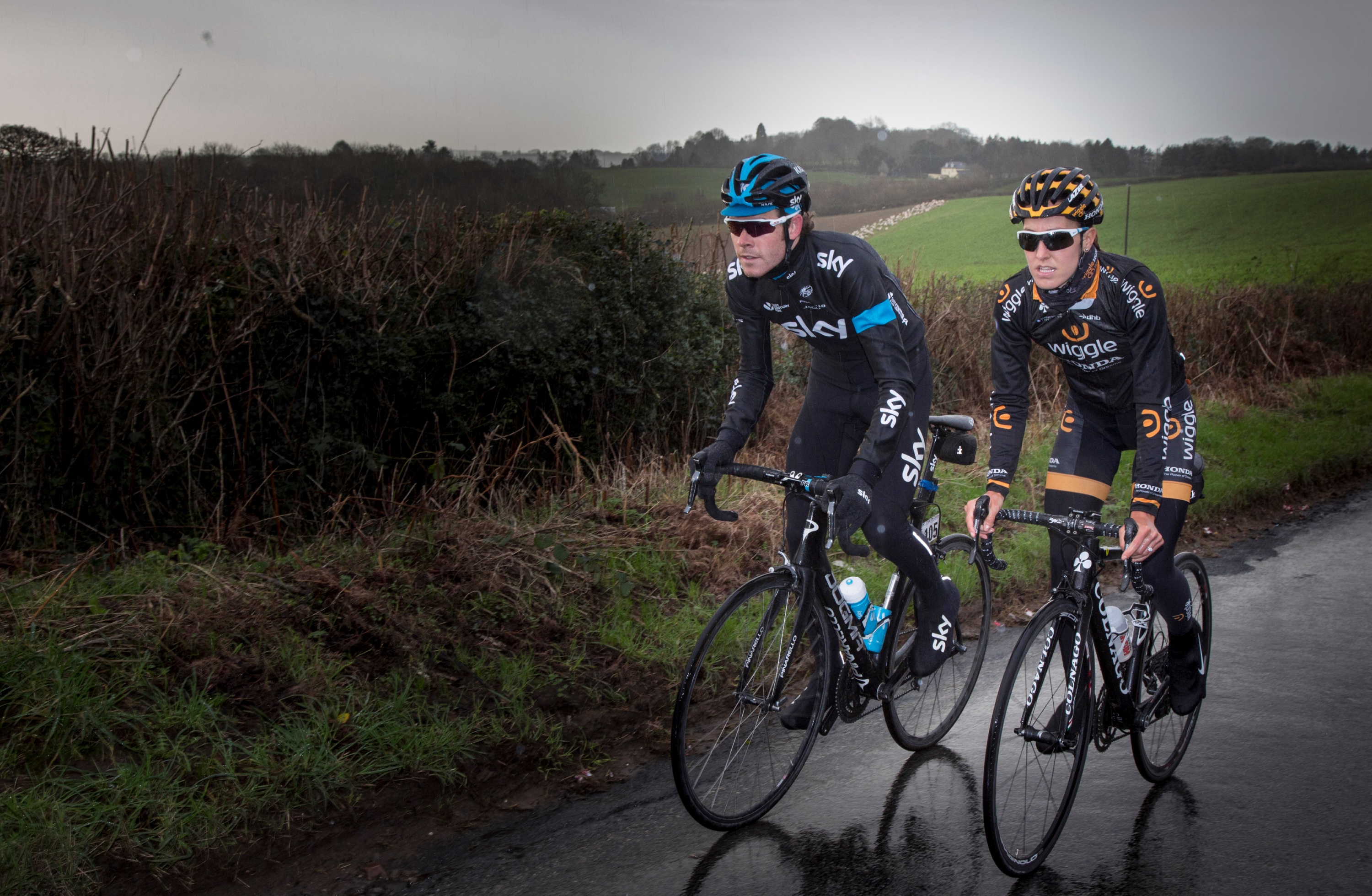Tips on how to ride up climbs faster

‘How can I ride up climbs quicker’ is a question we are often asked! We sat with Luke Rowe and Rowe & King Head Coach Courtney Rowe to find out their best advice for getting up hills quicker! Here are some tips to help you climb hills faster.


1. Positioning
Luke – If you’re not as strong a climber as the other guys around you, try and position yourself at the front of the group going into a climb.
It what a lot of the sprinters do when I’m racing; they start at the front of the group then it gives them a bit of sliding room so they may be able to stay in contact until the summit without being dropped. During the Tour, I am always right at the front at the start of the long climbs – most of the time to be there for Froome, but even when it’s not for team duties, its just the best way to get yourself over a climb!
It’s a principle which is perhaps more applicable to club runs or racing as it’s difficult to know how strong your group is in a sportive, though if you know you’re likely to be dropped, at least give yourself a little room to move back in a group.
But remember, ride the climb at a pace you’re comfortable with. Thinking about your positioning helps you to do that while staying in contact with other riders.
2. Work on your technique
Luke – Naturally, I tend to stay seated when climbing which I think is partly down to growing up on the track. When you’re riding fixed gear you hardly ever get out of the saddle – and that’s generally the most efficient way to climb hills faster.
I try and stay in the saddle, only standing to break up the rhythm or on a particularly steep section, treat a climb like a time trial – it’s you against the climb.
Having a good a cadence and a good position on the bike definitely helps to be more efficient. Make sure you’re not rocking and rolling on the bike, open your chest and concentrate on your breathing.
Try and keep your legs spinning, with a cadence of around 80 to 90. I sometimes get up to 100 but that’s pretty fast and you’ve got to train to get used to that speed.

3. Know the climb – be prepared
Courtney – Knowing a climb helps you plan how to pace your effort. It helps psychologically, too, as you know where to pace it, where to back off and where to go for it.
Make sure you have the right gearing – rocking up with a 42 ring and 23 tooth sprocket isn’t going to give you the easiest ride up a long, steep climb! Having a bigger cassette fitted is the quickest way to gaining an extra gear or two. Have a nice, easy gear that you can spin in the saddle.
4. Pace yourself
Courtney – Pacing is vital, on each individual climb and over the course of a ride itself.
I work on the principle of ‘start slow and finish fast’. Riding to a power you know you can sustain early on a climb will help ensure you don’t start too fast and risk cracking!
Find a tempo that you feel comfortable with and settle in.
Obviously in a race, you can’t let the group ride away from you while you sit in your own rhythm, but you get the gist.
Try and avoid surges in your effort – a nice consistent effort is the most efficient way to get from bottom to top.

5. Do some specific training
Courtney – The best way to improve your climbing is to get out on your bike as much you can and ride up as many hills as you can.
Initially that’s what will see you make the biggest improvements. Specific intervals to work on your strength (which is what we rely on when climbing – not speed) will help make further gains.
A simple session called ‘over and unders’ where you repeatedly ride above and then just below your threshold will increase your threshold and with it the speed which you can ride up climbs!

6. Nutrition
Courtney – Keep topped up throughout the ride – that’s essential. You don’t want to be bonking half way round.
Try to plan your nutrition strategy in line with the main climbs. Don’t eat immediately at the bottom of the ascent or it may come back up, but try and have an energy bar 15 or 20 minutes before you get to the climb. This advice is more relative to alpine climbs / mountains as opposed to shorter, steeper climbs of maybe a few minutes.
Otherwise, gels are good for when you’re on the climb itself as they’re easy to digest. Think about having another bite or two of an energy bar at the top of a climb as well to recover.
Keep drinking as well, stay topped up. The most important thing is to eat and drink little and often to make sure you don’t run low.

7. Lose some weight
Courtney – It’s not applicable to everyone, but many of us have a kilo or two that we could shed. The speed at which we travel up a climb on a bike is down to the power we can produce relative to our weight. A 60kg rider pushing 300Watts (5w/kg) will travel faster than a 70kg rider pushing 300Watts (4.28w/kg). Shedding a few kilos (if we have it to lose) is a simple way to climb faster.
@LukeRowe1990
@Dani_Rowe_MBE
@RoweandKing